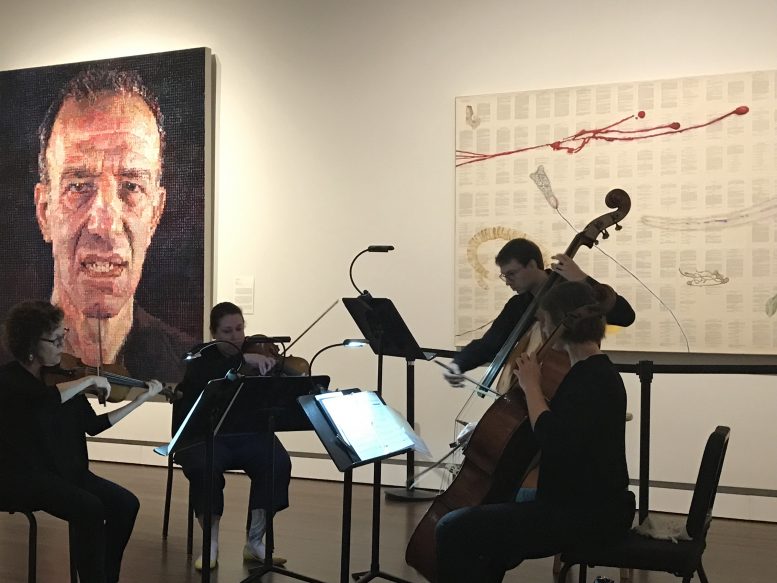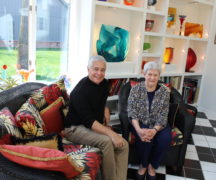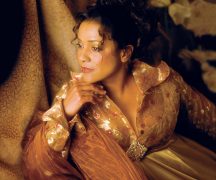By DAVID DUPONT
BG Independent News
They didn’t roll up the sidewalks Saturday night at 10 as John Denver once claimed.
The music was still ringing out at the Toledo Museum when the hour struck, and the more intrepid members of the 4(19) Festival audience were about to head out for the last stop of the night, Bellwether at Toledo Spirits.
Saturday was the second and longest day of the three-day festival staged by the Toledo Museum of Art and the Toledo Symphony Orchestra in collaboration with ADJective New Music.
Saturday night’s offerings, which borrowed the title of the Denver song “Saturday Night, in Toledo Ohio” as its theme, didn’t just offer a riposte to the late singer-songwriter’s dismissive ditty, it exposed it as the smug caricature that it is. For those who love the sounds of contemporary music Saturday night and day, and the previous evening, was precisely where you want to be hearing music of far more substance and import. The festival concludes today (Sunday, Aug. 11) from 2-4 p.m. with Holy Toledo, a celebration of contemporary music with spiritual themes. Today’s performances are free.
The 4(19) Festival presented the work of composers with ties to the area in the felicitous settings of the museum’s galleries, with that one late night excursion to Bellwether.
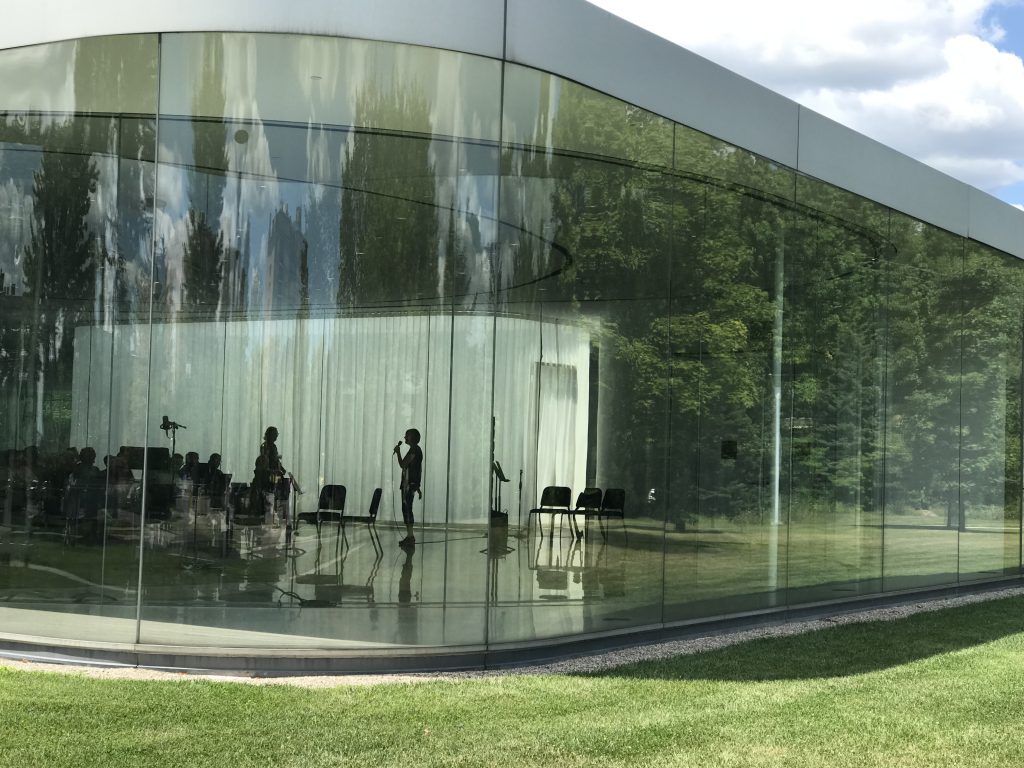
The music presented ranged from Pete Ford’s hummable sea chantey for string quartet “Blustery Skies Over Michigan” to an electronic piece featuring the variety of sounds made by handling trash recorded and manipulated by composer Robert McClure.
The afternoon was devoted to the nature of the Black Swamp. Elainie Lillios, of the Bowling Green State University faculty (nine of the 19 composers represented had BGSU ties as did a number of the performers), drew on the resources of Octavian Moldovean’s flute and electronic samples to evoke fireflies.
Pulitzer Prize winner Jennifer Higdon’s string quartet “An Exaltation of Larks” summoned a sky full of birds.
Later composer Andrew Martin Smith had a half-dozen violinists swarming insect-like around a patch of lawn in Welles Sculpture Garden.
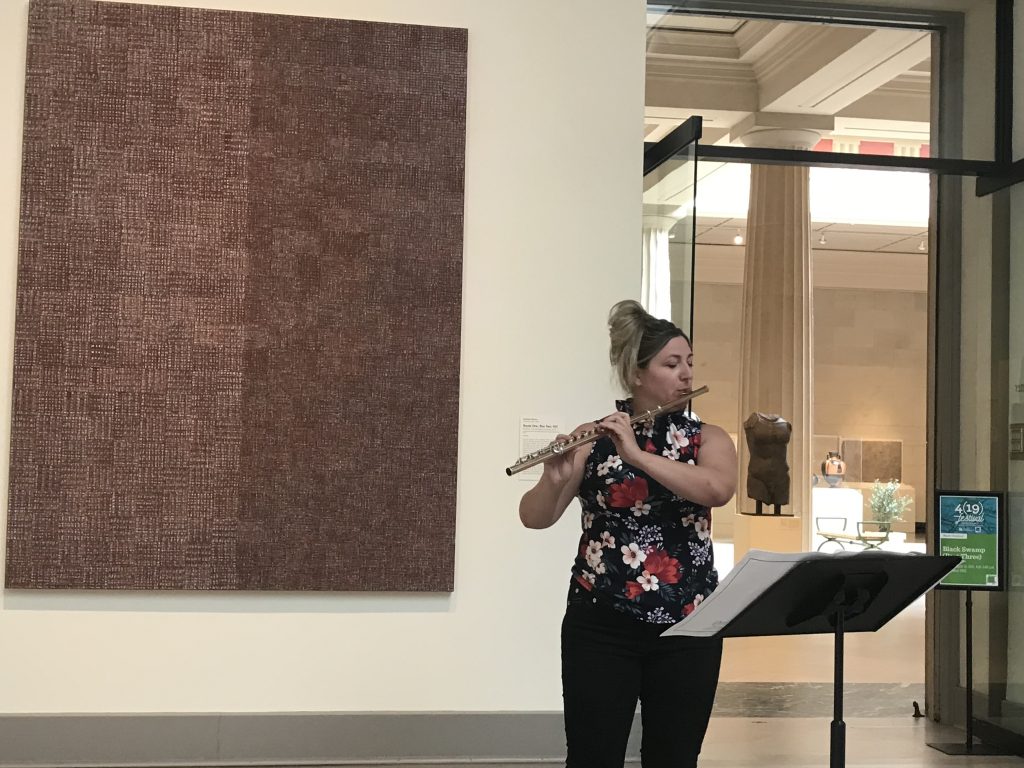
Inside the museum, Brandy Hudelson, who literally wrote the book in the form of a collection of etudes on beat box flute, performed “Wild Nightingale.” Then in the Wolfe Gallery, with Chuck Close and “The Temptation of St Anthony” by Tim Rollins and Kids of Survival looking on, the music took a darker turn.
Lillios working with clarinetist Derek Emch, on the foreboding “Undertow” evoked the threat of environmental degradation. McClure with his trash generated sounds and the occasional hint of an alarm, addressed the issue directly while Ford’s saxophone quartet was simply a musical representation of the workings of a refinery.
In his string quartet, “Grime,” Evan Williams used acoustic instruments to imitate the sounds of a distorted electric guitar. Completed at BGSU, the quartet is the piece in which Williams discovered his voice as a composer, he told the audience.
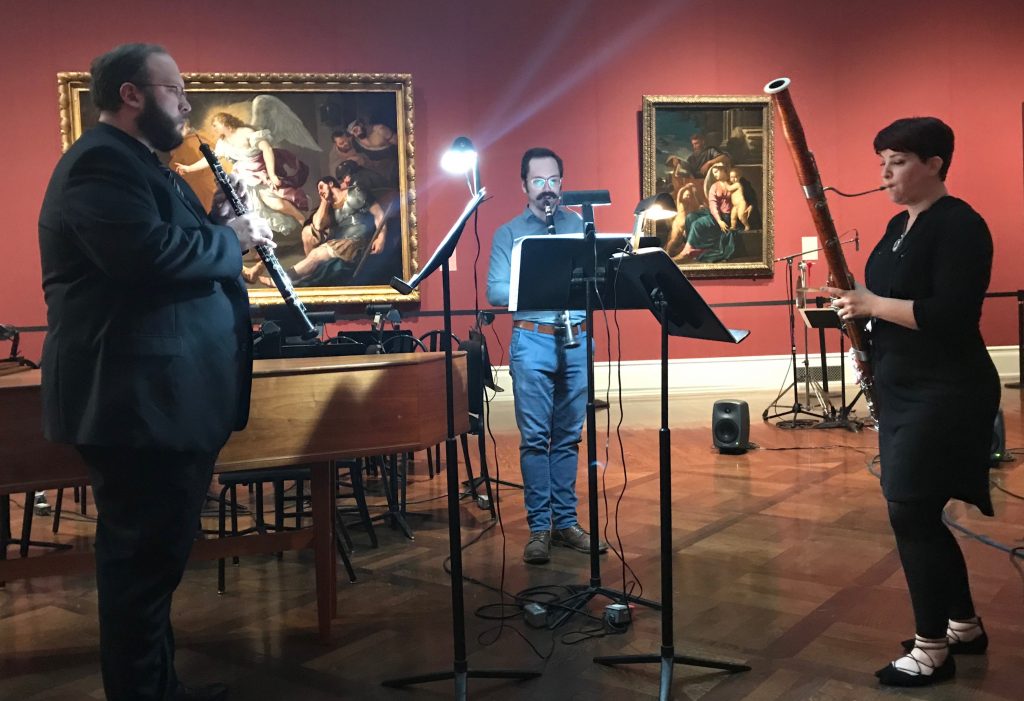
Saturday’s last museum concert took a darker turn. After a supper break, performers and listeners reconvened in the museum’s Great Gallery Surrounded by saints and deities for the first part of a Saturday Night in Toledo, Ohio. The museum was otherwise closed, and the lights dimmed. Wandering in the few neighboring galleries still open was eerie. And the music summoned its share of ghosts.
Jamie Leigh Sampson, of ADJective music opened with a woodwind trio based on the speech patterns of e.e. cummings’ poem “Anyone Lived.”
The concert paid tribute to musical contributors to the scene who are no longer with us.
Lillios’ presented “Immeasurable Distance,” a piece inspired by a request by the late BGSU percussion professor Roger Schupp. Lillios said that he’d ask all his composing colleagues at BGSU to write a piece that he could perform with instruments that would fit into a suitcase.
Working with percussionist Scott Deal, who performed “Immeasurable Distance,” she evoked his spirit with the ringing of small bells and gongs against the resonating electronic background.
The concert ended with two works for chamber orchestra. Merwin Siu, who organized the 4(19) Festival with Scott Boberg of the museum, delivered an emotional introduction to “Another Spring” by the late Andrew Massey. Siu said it was Massey who hired him as a violinist for the Toledo Symphony, and he conducted Siu as soloist for Vivaldi’s “The Seasons.”
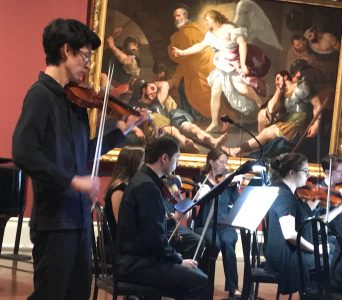
Forty minutes before Siu was supposed to go on, someone slid a sheet of manuscript paper under his dressing room door. It was new cadenza composed by Massey for the Spring movement. Siu was confused as to what to do with it. Only minutes before he stepped on stage, did Massey let him in on the joke.
Part of that cadenza, Siu said, is included in “Another Spring.” The work with Siu as soloist was no laughing matter, rather a contemporary vision of older music.
“Another Spring” drew the first standing ovation of the evening.
The program concluded with Williams’ “Dead White Man’s Music.” The piece, the composer explained, is his coming to grips with where he fits into the classical music tradition, and its dominance by “dead white men.” His piece, being performed for only the second time, uses material from that canon — a Lutheran hymn tune that was a favorite of Bach, an English folk tune, the toccata form — and then views them through the lens of African-American music, the work of Nina Simone, jazz, and hip hop.
The audience, surrounded by the painting of other dead white men, rose in appreciation.
The final act of the night required audience participation. The route to Bellwether a couple miles away in the 1300 block of North Summit moved through the heart of the city. Hip hop played in passing cars. The fans streamed home from the Mud Hens game.
The Bellwether was hopping with sound.
Siu, pianist Michael Boyd, and cellist Anthony Marcheses were setting the stage with the buoyant beat and klezmer melodies of Paul Schoenfield’s “Cafe Music.” Armond Wimberly’s “Canon for the Dance Floor” was another example of an African-American composer filtering the classical tradition through a contemporary lens.
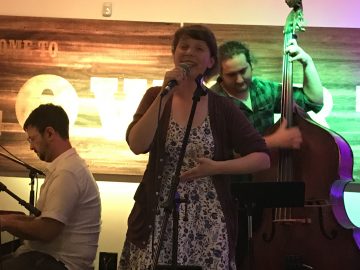
The evening ended with the Estar Cohen Quintet. Cohen, a graduate of the University of Toledo’s jazz program, uses her voice much like horn. True to the festival’s mission, she performed her own originals. They were sweeping, cascading melodies often shadowed by saxophonist Peter Formanek.
Cohen has a fluid, airy soprano. She carries forward the tradition not only of Jon Hendricks, who spent his final years as a grand presence at UT, but also those legendary improvising female vocalists with ties to Detroit, Sheila Jordan and Betty Carter.
The acoustics and the chatty crowd did Cohen no favors. Listeners got only a hint of what would be in store in more favorable circumstances, maybe on another Saturday Night in Toledo, Ohio.

